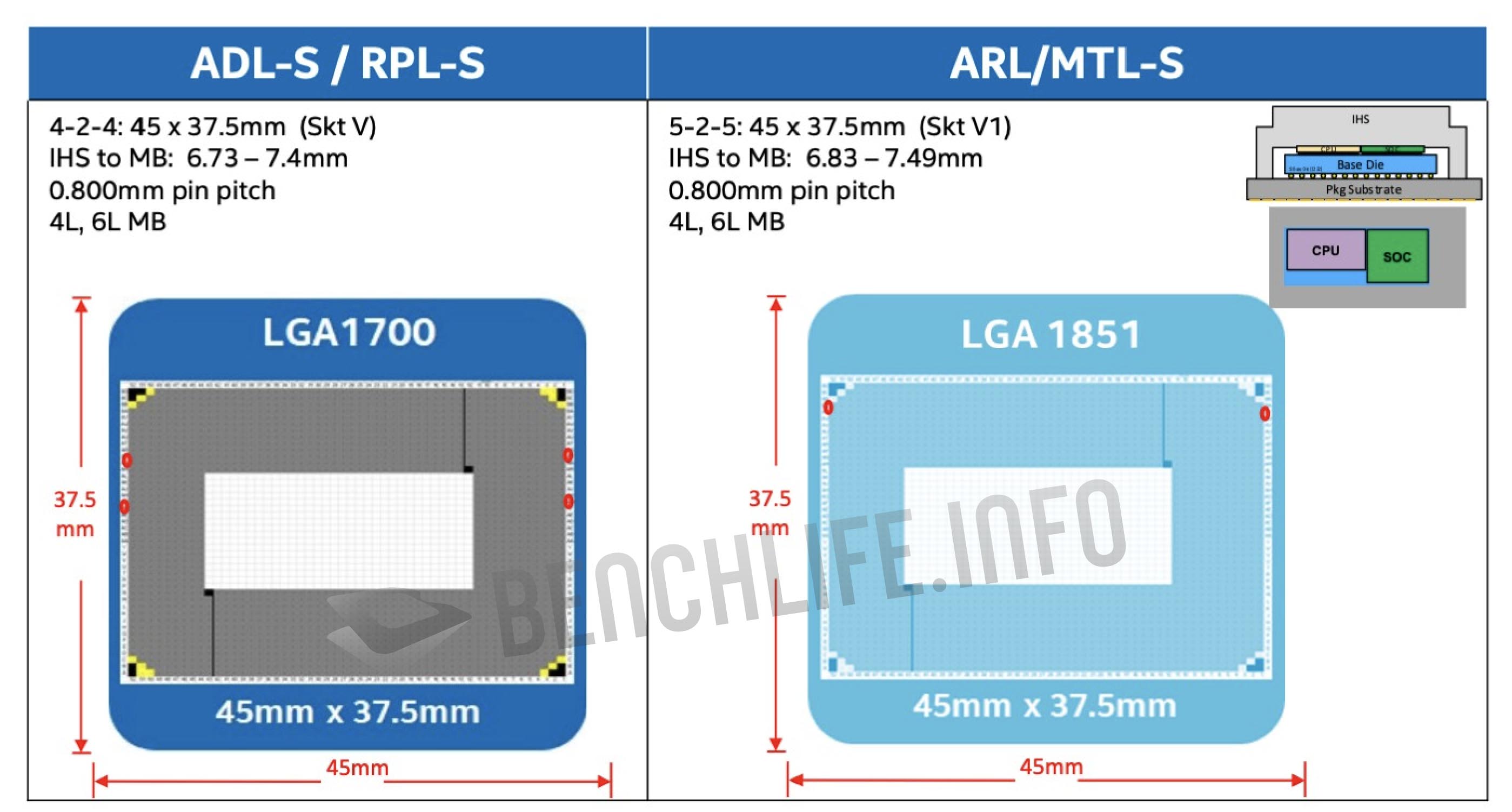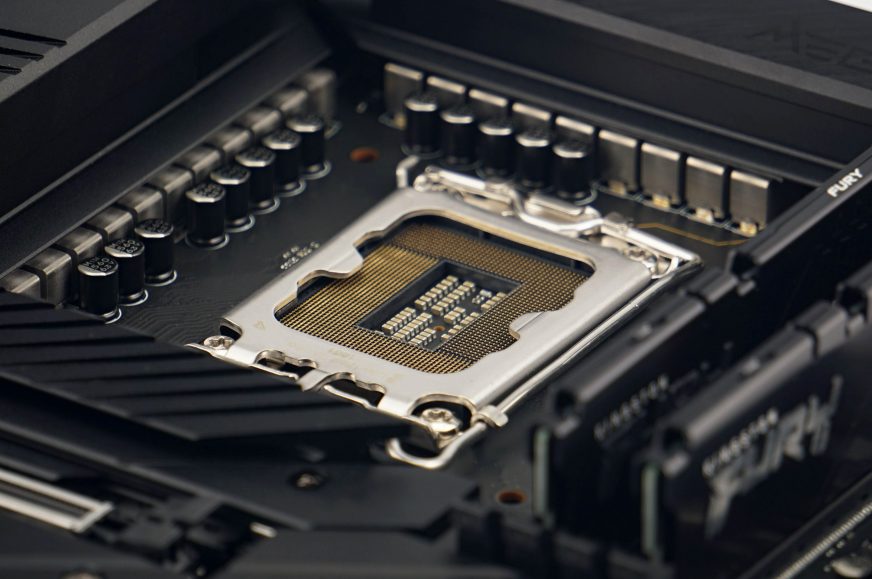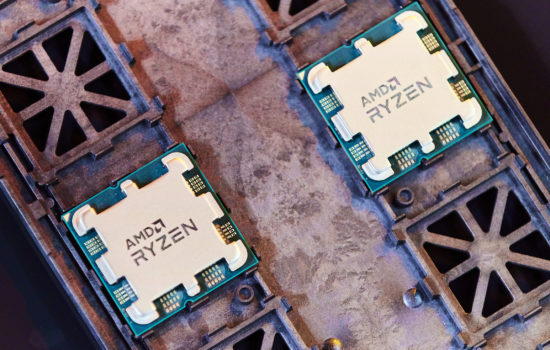LGA 1851 will introduce AM5-style native PCIe 5.0 for SSDs to the Intel platform
Intel LGA 1700 desktop platform is now running on its second generation of processors (Raptor Lake) which will see a refresh in fall, but that will be the end of this socket. A new LGA 1851 socket is planned for Meteor Lake and Arrow Lake processors and a report has now revealed new features of this platform. Intel will give the processor-connected I/O interfaces an upgrade that will put it closer to the AM5 platform.
The information was posted on Twitter by the user going by the nick TCL, who has previous track record of publishing details of the Intel Xeon W-2400 and W-3400 processors prior to their release. So their tweets seem to be worth examining. The author has since deleted the info (after reportedly noticing attempts to hack his accounts), but not before the information was noticed and shared elsewhere.
LGA 1851 with Meteor Lake CPUs
The LGA 1851 socket is said to still provide a PCI Express 5.0 ×16 interface for GPUs, so a move to PCI Express 6.0 won’t be on the table just yet. Unfortunately, TCL doesn’t specify what will be the bifurcation option of this interface for connecting multiple GPUs or SSDs. The LGA 1700 platform (wih Z690, Z790, H670 and H770 chipsets) curretly only supports ×8/×8 split.
The most important news, however, is that there has been an improvement in connectivity for SSDs attacheddirectly to the CPU, allowing Intel to catch up with AMD. The LGA 1700 platform only provides one PCIe 4.0 ×4 interface for SSDs today (PCIe 5.0 SSDs thus have to use eight lanes intended for graphics cards, if the board wants to supports them). The LGA 1851 will provide a dedicated PCIe 5.0 ×4 interface directly attached to CPU, in addition to the ×16 slot for GPUs, so fully native support for the latest and fastest SSDs is coming. But alongside this, the processor will also provide a second PCI 4.0 ×4 interface for additional SSDs.
This is slightly worse capability than what’s offered AMD AM5 , where the CPU has a PCIe 5.0 ×16 for attaching GPU and then two other PCIe 5.0 ×4 interfaces for the SSD (the GPU slot can also be split into ×8/×4/×4 on AM5 with Ryzen 7000s processors, thanks to which there are boards that provide four PCIe 5.0 ×4 slots).
Z890 Chipset
The chipset will again be connected via DMI4 8X, which is the equivalent of PCIe 4.0 ×8. Intel will continue to have an advantage here, as AMD chipsets only have a PCIe 4.0 ×4 uplink to the CPU. The boards will again introduce a new generation of chipsets, and the top-of-the-line Z890 is expected to provide up to 24 PCIe 4.0 lanes (four more than the Z790). So the connectivity, along with the interfaces provided by the CPU, will be quite extensive. The chipset will also be able to be paired with the new Wi-Fi 7 wireless modules, but we don’t know if this means integrating their digital part in the chipset as well, or if we are talking fully discrete modules which Intel only lists in the platform overview as an optional add-in.
This information relates to the LGA 1851 platform when combined with Meteor Lake-S desktop processors. Socket LGA 1851, these processors and their respective boards may have originally been due out later this year, but since it’s unclear how far is the launch or even if the Meteor Lake desktop processors will come out at all, the release may be delayed, perhaps even until the next generation of Arrow Lake processors are ready.
Arrow Lake may in theory bring other changes, such as the promotion of the second SSD interface from PCIe 4.0 ×4 to fifth-generation lanes. Also, there may be a new chipset (Z990?) with even more PCIe lanes or perhaps a PCIe 5.0 ×8 uplink. But such improvements would naturally only work on new boards and processors, without backwards compatibility with the original boards.

More information about the LGA 1851 platform has appeared last year. According to it, the processors will be chiplet-based and maybe slightly higher than today’s ones. However, the footprint of the CPU package is the same as with LGA 1700 CPUs at 37.5 × 45.0 mm. And that could mean compatibility with Alder Lake and Raptor Lake CPU coolers will be maintained.
Sources: TCL (Twitter – removed), VideoCardz
English translation and edit by Jozef Dudáš
⠀









